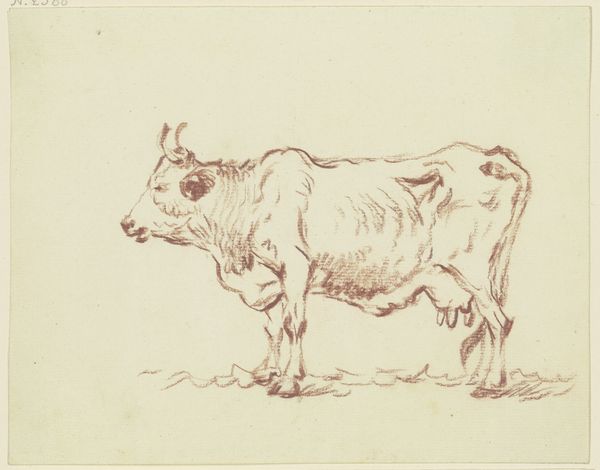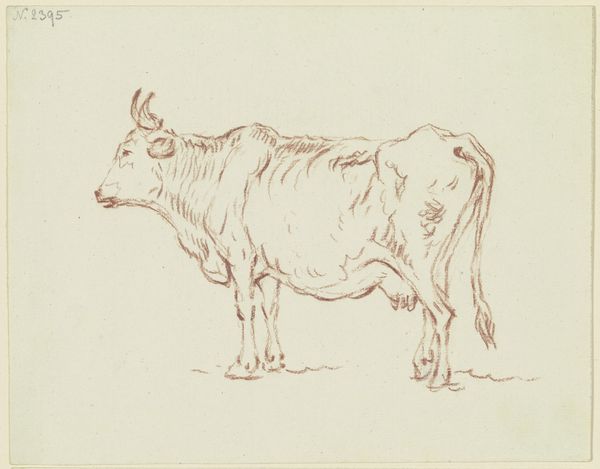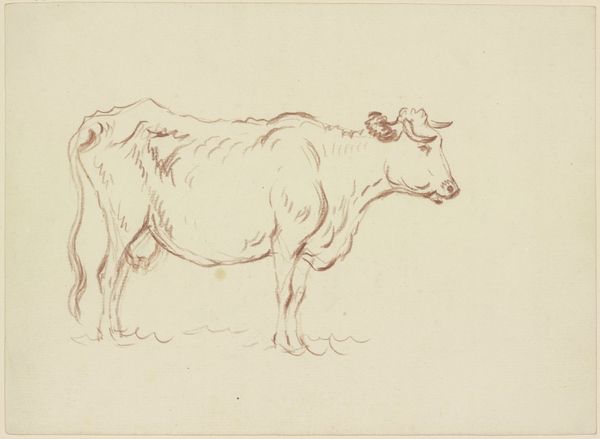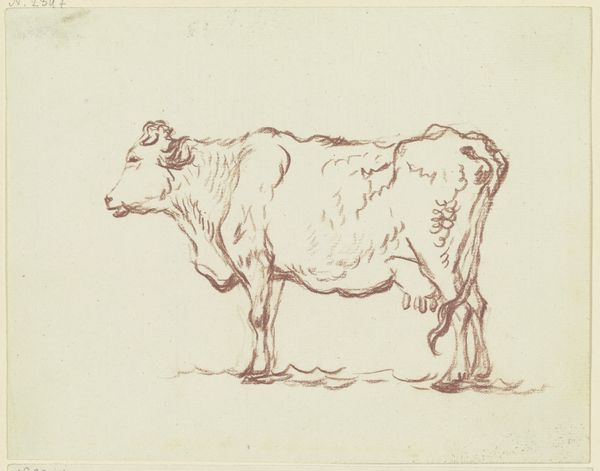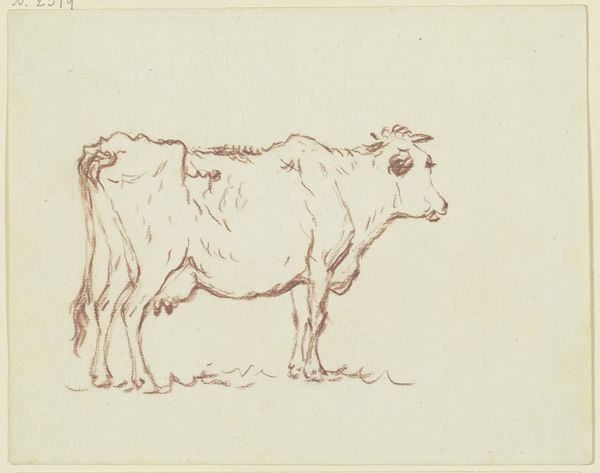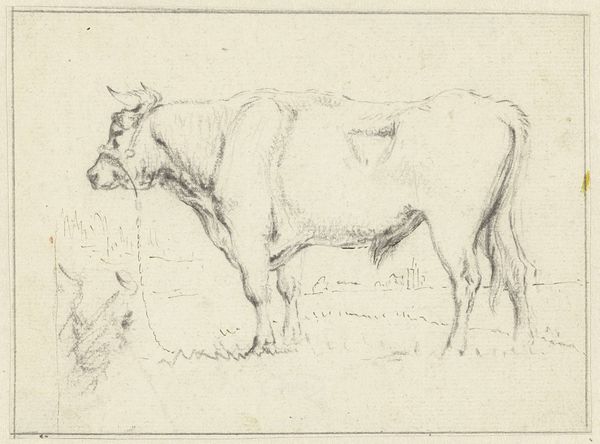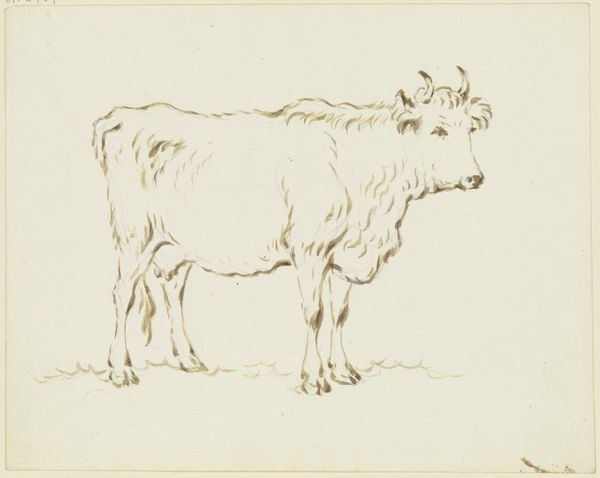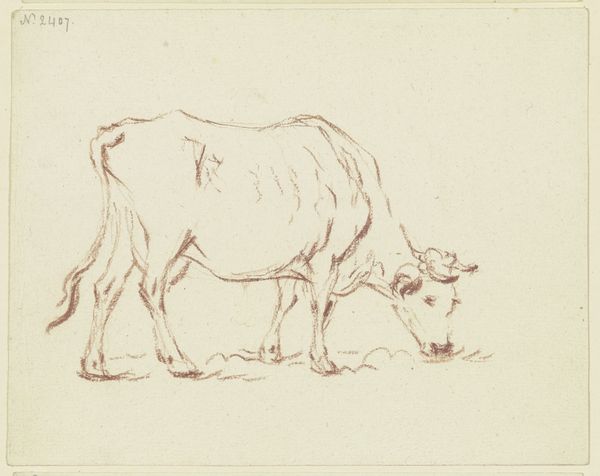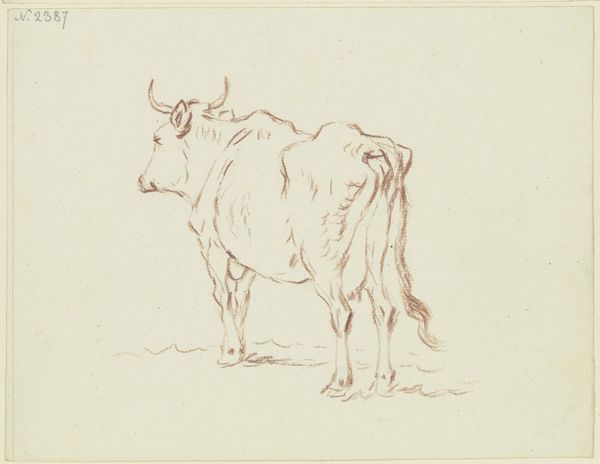
drawing, paper, pencil
#
portrait
#
drawing
#
dutch-golden-age
#
landscape
#
figuration
#
paper
#
pencil
#
realism
Dimensions: height 65 mm, width 82 mm
Copyright: Rijks Museum: Open Domain
Editor: This pencil drawing, "Grazende koe," or "Grazing Cow," by Karel du Jardin, made sometime between 1632 and 1678, is so simple, yet it really captures the essence of this animal. I find it very peaceful, almost meditative. What do you see in this piece, especially considering its historical context? Curator: I see a seemingly straightforward depiction of rural life, but it’s crucial to understand the historical lens. During the Dutch Golden Age, representations of the countryside weren’t just about aesthetics. They were deeply tied to burgeoning national identity and ideas of land ownership, reflecting the power and wealth accumulated through colonialism and trade. Editor: So, the cow becomes more than just a cow? Curator: Exactly! Consider who commissioned and consumed these images. These were often members of the elite class who profited from exploiting resources and labor, both domestically and abroad. Even this seemingly pastoral scene implicates ideas of ownership and control. It’s easy to romanticize this era, but we have to remember these artworks can normalize social hierarchies. How do you feel that affects our view of it today? Editor: That shifts my perspective quite a bit. It makes me think about how these images might have been used to promote a specific idealized view of Dutch society, one that obscures the darker realities. Curator: Precisely. This drawing allows us to reflect on how art plays a crucial role in shaping and perpetuating power structures, influencing how we see history and ourselves. It’s a reminder that even the most unassuming image can be embedded within broader systems of inequality. Editor: It's definitely changed how I'll look at similar pieces going forward! Curator: Yes, viewing it through this lens encourages a more critical understanding of art history and its role in our contemporary world.
Comments
No comments
Be the first to comment and join the conversation on the ultimate creative platform.



